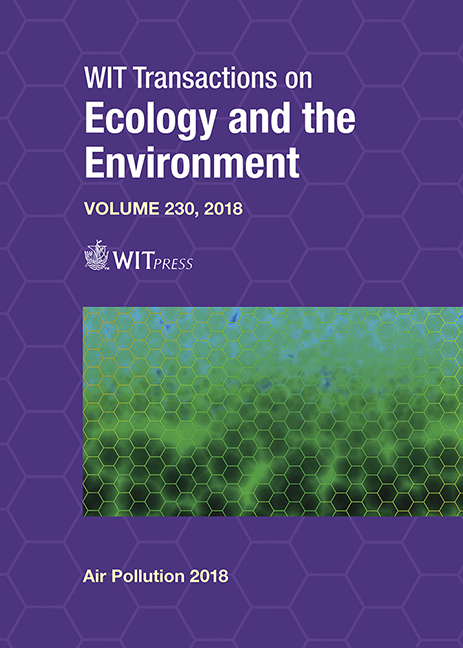TAILORED CHEMICAL MECHANISMS FOR SIMULATION OF URBAN AIR POLLUTION
Price
Free (open access)
Transaction
Volume
230
Pages
12
Page Range
165 - 176
Published
2018
Paper DOI
10.2495/AIR180151
Copyright
WIT Press
Author(s)
LARS MAGNUS T. JOELSSON, CHRISTOFFER PICHLER, ELNA J. K. NILSSON
Abstract
A semi-stochastic, statistical reduction method for chemical kinetic schemes based on the ant colony optimization method, is developed for atmospheric chemistry simulations. The prime application is coupled dynamic and chemistry models for simulation of the dispersion and reactivity of chemical species on street scale, i.e. the modelling of urban air pollution in street canyons. The method is designed so that it will optimize the reduction process for any simulation case, as given by user-specific inputs, such as initial concentrations of reactive species, temperature, humidity, residence time, and solar radiation. These inputs will correspond to, or be deduced from, actual variables such as season, time-of-day, geographic location, proximity to volatile organic carbon or nitrogen oxides sources (e.g. forests, roads, industry, harbours etc.) and their source strengths, weather, composition of vehicle fleet, and traffic load inside the street canyon. The method is evaluated against three box model case studies (laboratory and atmospheric simulations) previously described in the literature. The method reduces the mechanism sizes with 62.5%, 84.7%, and 97.7% respectively, retaining the average accuracy for the prediction of the target compound (O3, NO2, and NO) concentrations by 94.1%, 90.3%, and 91.2% respectively. These preliminary results illustrate the potential for the method. Further developments, such as inclusion of lumping or short-cutting of reaction paths, can be considered.
Keywords
modelling, air pollution, reduced chemical kinetic mechanism, ant colony optimization





